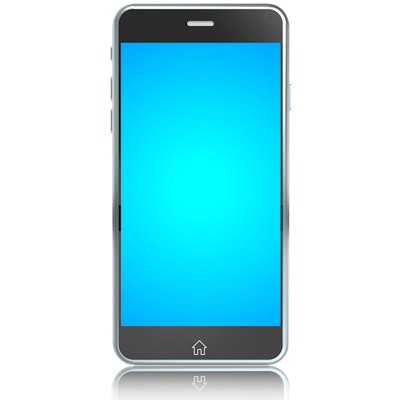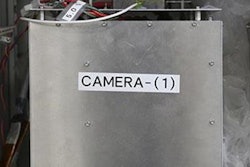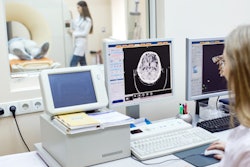
Mobile phones can sometimes be a nuisance in daily life, but in a nuclear medicine suite, electromagnetic interference (EMI) emitted by phones could even adversely affect the performance of gamma cameras, according to a study published in the March issue of the Journal of Medical Imaging and Radiation Sciences.
Australian researchers tested an Apple iPhone 6 in four operating modes on two different gamma cameras using a thyroid phantom. Visually, there were no discernable differences between baseline and test images. There was, however, one detectable artifact on 23 (96%) of 24 test scenarios (J Med Imaging Radiat Sci, March 2019, Vol. 50:1, pp. 136-141).
While the results may be concerning, a complete ban of mobile phones in the nuclear medicine department is not yet warranted.
"Mobile phones are capable of generating EMI sufficient, in all modes, to create artifactual count data on some gamma cameras," wrote lead author Melissa Dowling and colleagues at Charles Sturt University in Wagga Wagga. "Caution is advised when mobile phone devices are to be used in immediate proximity to gamma cameras during image acquisition."
Leave home without it
It can be quite the task for clinicians to control the presence of mobile phones in imaging centers, given patients' predilection for the devices. No doubt there are more than a few anecdotes about patients having cellphones in their pockets during scans.
The problem for radiology is that cellphones emit electromagnetic interference while transmitting or receiving, which, in turn, can cause varying degrees of disruption in nearby equipment of all kinds. Previous studies have suggested the effects can be more pronounced the closer a mobile phone is to equipment.
"Although these previous occurrences are reported on medical equipment, only three studies have been conducted regarding their potential impact on the function of gamma cameras used within nuclear medicine departments with variable or nonreproducible results," Dowling and colleagues noted.
"The aim of this investigation was to evaluate the function of the gamma camera during operation of a mobile phone and to test whether the resulting EMI resulted in an alteration of gamma camera performance," they wrote.
To gauge the potential impact of interference from cellphone EMI on gamma cameras, the researchers took a thyroid phantom and an Apple iPhone 6 and performed planar imaging on SPECT (e.cam, Siemens Healthineers) and SPECT/CT systems (Discovery 670, GE Healthcare).
The process began with a baseline image of the thyroid phantom, followed by the phone being placed near the phantom in three different positions for imaging:
- A supine position directly on the detector against the superior aspect of the thyroid
- A supine position directly posterior to the phantom
- Elevated posteriorly by 10 cm behind the phantom
During each of the three positions on both gamma cameras, the researchers acquired a one-minute static planar image while the phone was in one of four modes:
- Standby mode
- While ringing continuously
- While answering a call
- While playing music
Camera settings remained constant, with the researchers using low-energy, high-resolution collimation on 140 keV for technetium-99m. The static images were arithmetically assessed through subtraction from the baseline image.
Visual review
Based on visual assessment, all of the images from the four operating modes and three positions maintained the same level of image quality, uniformity, and resolution, compared with the baseline results.
After subtracting each image from baseline results, the researchers found no artifacts when the phone was in standby mode in the first position. However, artifactual counts were detected with the other three operating modes in the first position and in all four modes in the second and third positions.
The artifact was highlighted by an "increased ring of activity on the activation of mobile signals regardless of position" with the e.cam gamma camera, the researchers noted. On the other hand, images acquired on the GE Discovery 670 system showed no postsubtraction artifact in any of the three positions across all four operating modes.
Given the results, the researchers concluded that artifacts in SPECT data "may have a greater impact as errors are multiplied several orders of magnitude during the reconstruction process. It is recommended, therefore, that mobile phones are not left with a patient during scanning even if the phone is out of the field-of-view."
In addition, staff members should be aware of the potential effects of their carrying a mobile phone close to a gamma camera while it is scanning. Nuclear medicine departments also should inquire about EMI shielding requirements from gamma camera vendors before a purchase.
"A complete ban of mobile devices in a nuclear medicine department is not warranted," Dowling and colleagues added. "Instead, further investigation of the impact on SPECT data is recommended."




















